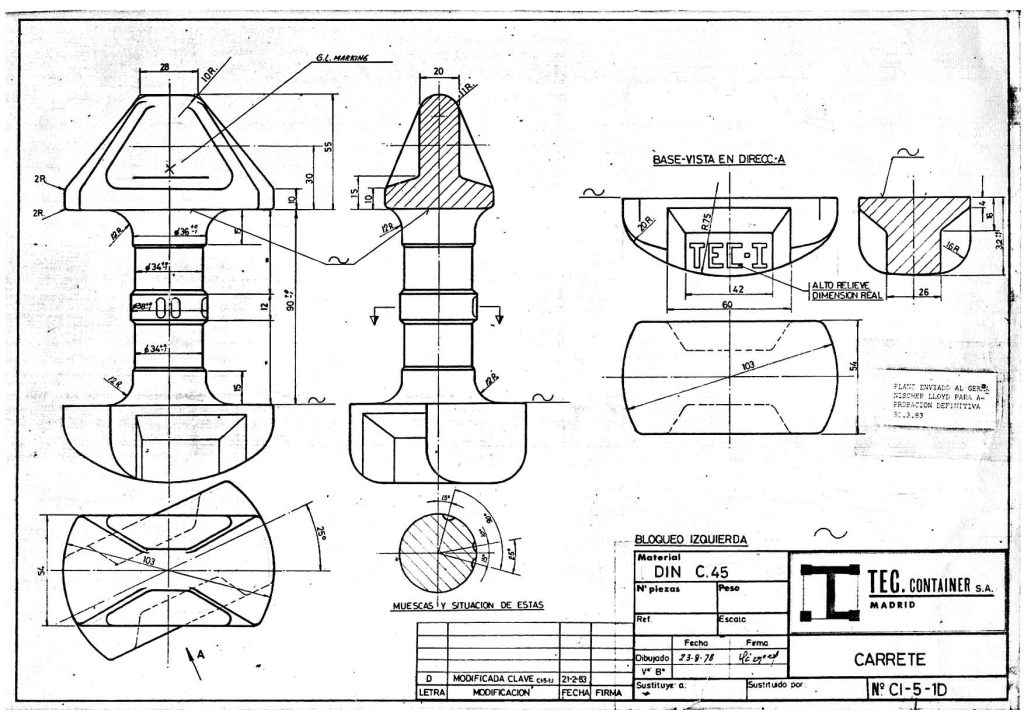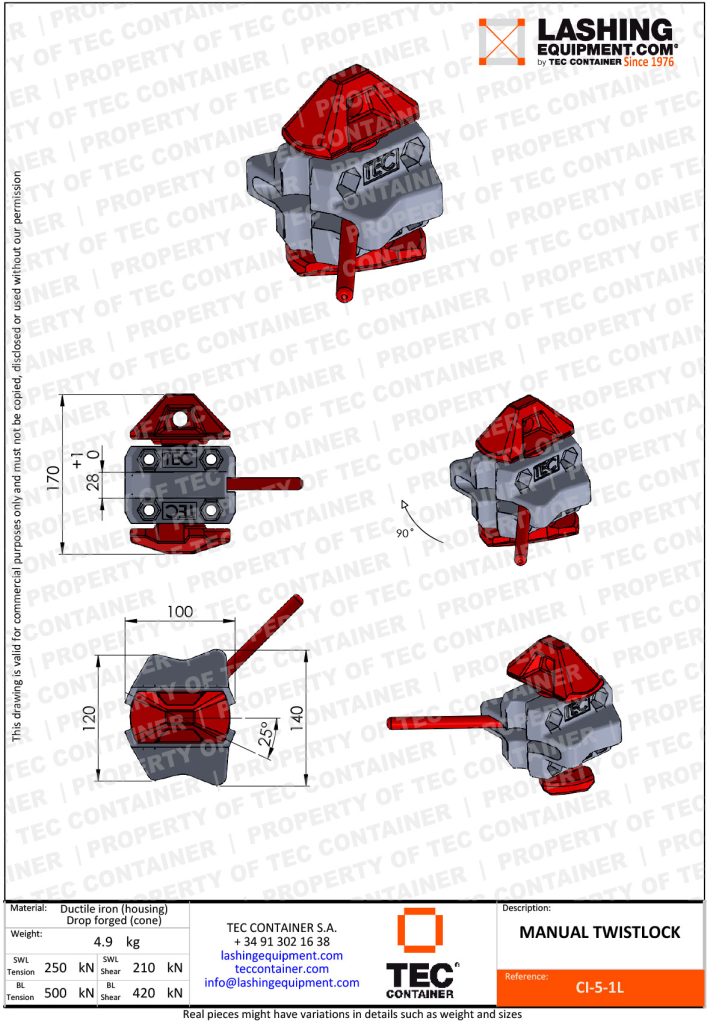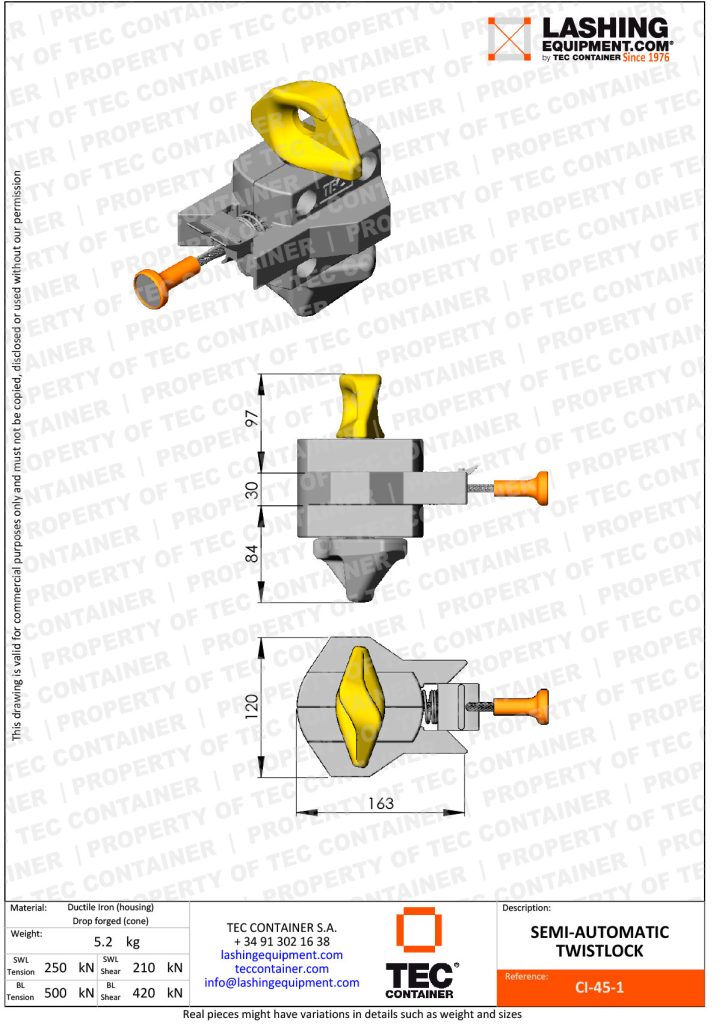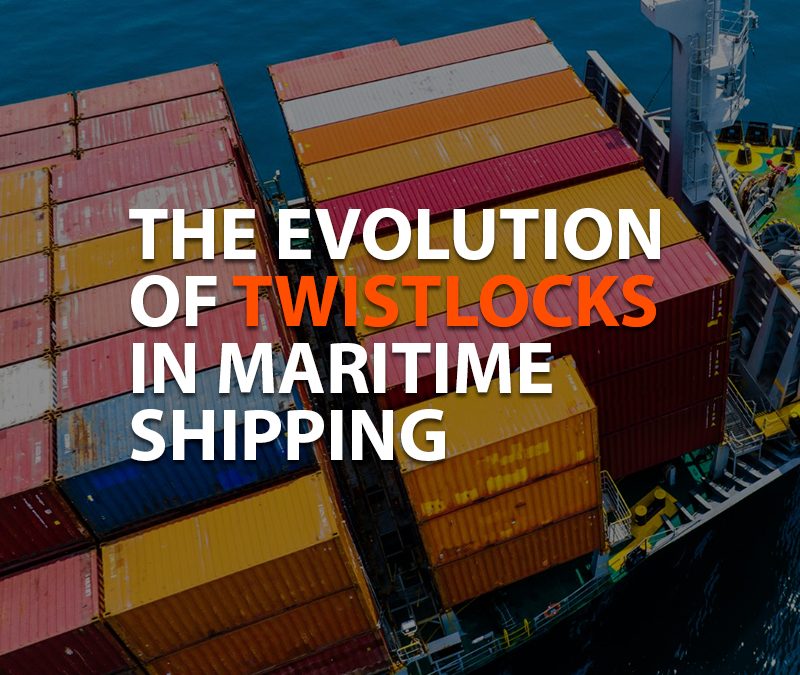Twistlocks may seem like mere metal fittings, but they are pivotal to the global shipping industry’s evolution. Born out of necessity, these ingenious devices have revolutionized the way cargo is transported across the world’s oceans.
The Inception of Twistlocks
The story of twistlocks begins in the mid-20th century, paralleling the rise of containerization. Before their advent, cargo was manually loaded and unloaded, a process known as break-bulk shipping. It was time-consuming, labor-intensive, and inefficient. The need for a more streamlined method led to the invention of twistlocks, which allowed for faster, safer, and more efficient loading and unloading of cargo containers.

Plans for one of the first TEC Container twistlocks in 1977
Technological Evolution and Design
Twistlocks have undergone significant design improvements over the decades. Originally, they were simple locking mechanisms. As container ships grew larger and container loads heavier, the design of twistlocks evolved to accommodate these changes. Modern twistlocks are not only stronger but also more sophisticated, with automated systems being developed for even greater efficiency.

Global Impact and Standardization
One of the most significant impacts of twistlocks has been the standardization of container sizes. This standardization was crucial in optimizing global trade, reducing shipping costs, and improving logistics efficiency. Twistlocks have facilitated the seamless transfer of containers between ships, trucks, and trains, making them a linchpin in the world of intermodal transportation.
Safety and Reliability
Safety is paramount in shipping, and twistlocks have been instrumental in ensuring the secure transportation of containers. They are designed to withstand harsh maritime conditions, preventing containers from shifting or toppling during transit. This reliability has made them an indispensable tool in the shipping industry.

Semi-automatic Twistlock CI-45-1
The Future of Twistlocks
The future of twistlocks lies in automation and technological integration. Automated twistlocks and smart systems are being developed to further reduce loading times and enhance safety. These advancements promise to keep twistlocks at the forefront of shipping innovation.
From their modest beginnings to becoming an essential component in maritime logistics, twistlocks have played a crucial role in shaping the modern shipping industry. As we sail into the future, their legacy of innovation continues to underpin the efficient and safe transport of goods across our oceans.
Would you be interested in acquiring lashing equipment?







